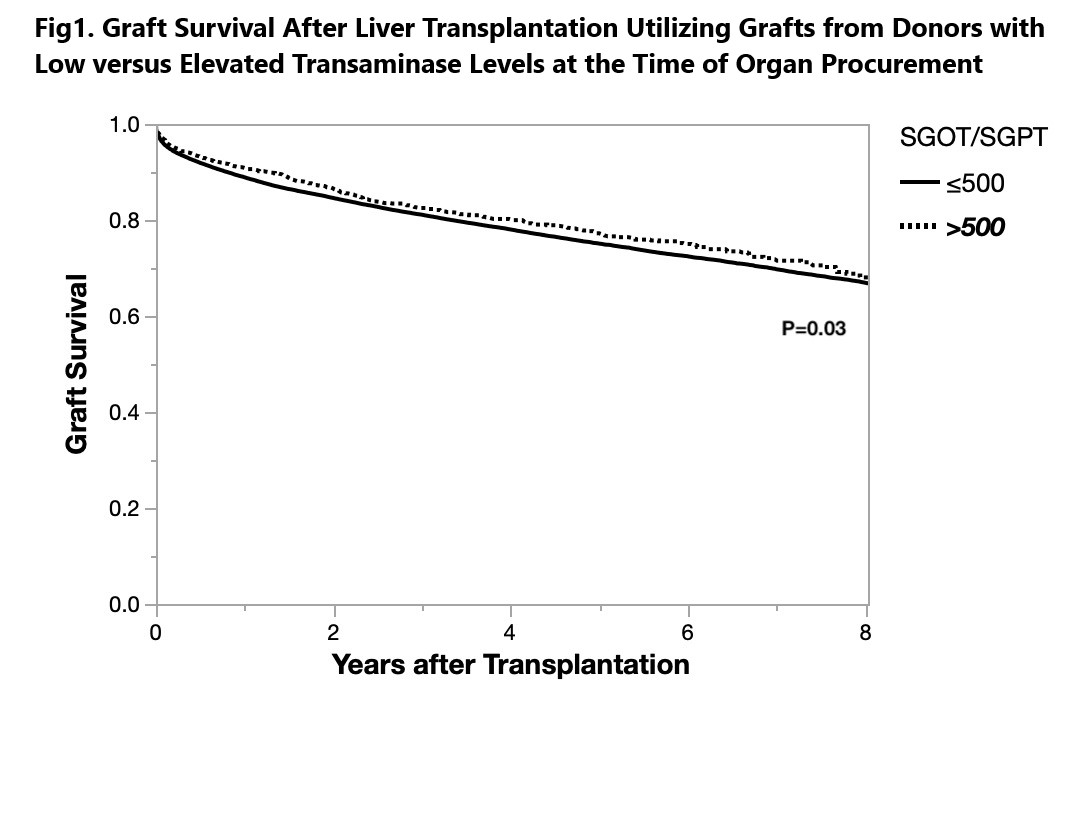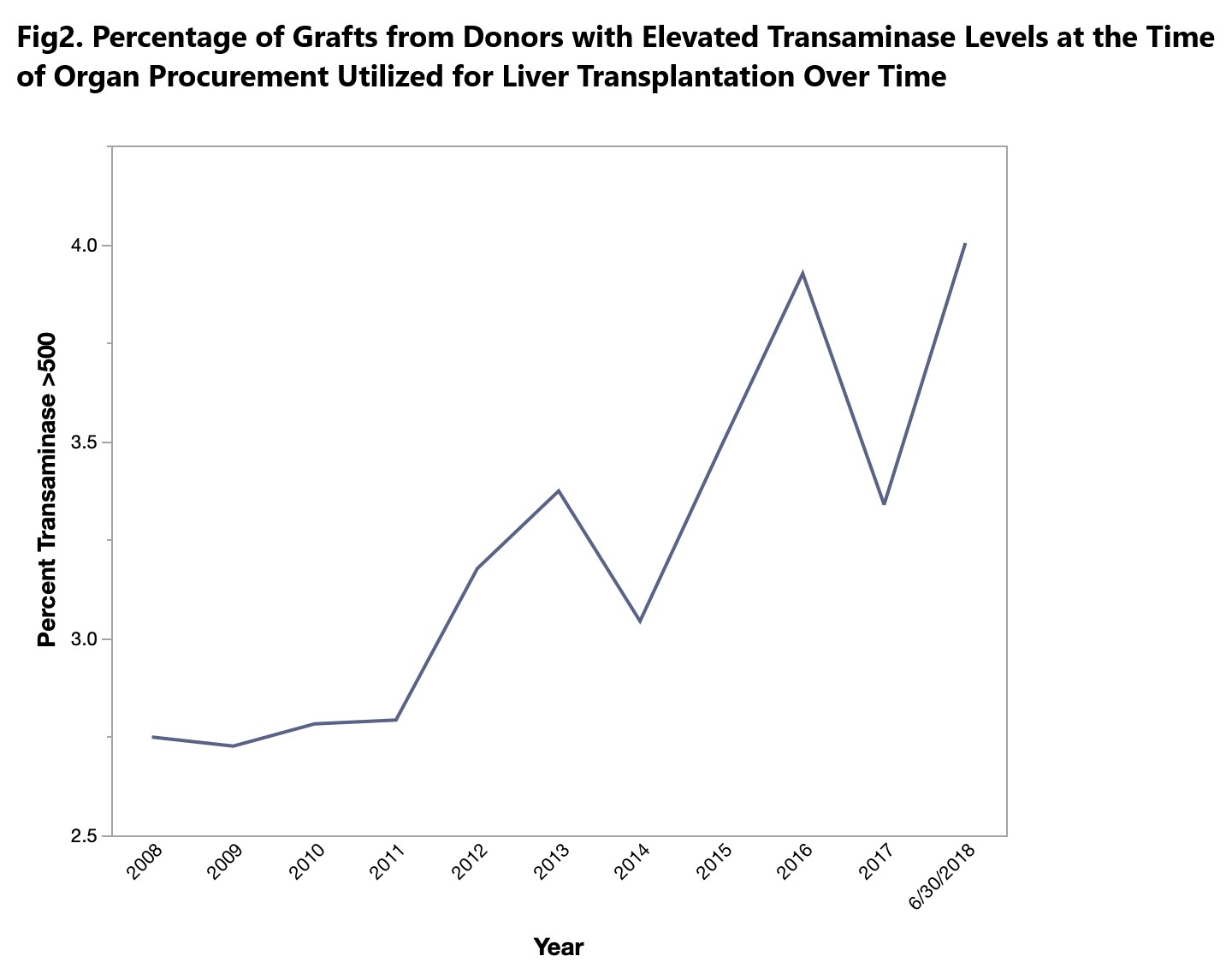The Effect of Donor Transaminase Levels on Graft Survival Following Liver Transplantation: An OPTN Database Analysis
1Vanderbilt University Medical Center, Nashville, TN, 2UMass Memorial Medical Center, Worcester, MA, 3University of Washington, Seattle, WA
Meeting: 2020 American Transplant Congress
Abstract number: B-122
Keywords: Donors, marginal, Liver transplantation
Session Information
Session Name: Poster Session B: Liver: MELD, Allocation and Donor Issues (DCD/ECD)
Session Type: Poster Session
Date: Saturday, May 30, 2020
Session Time: 3:15pm-4:00pm
 Presentation Time: 3:30pm-4:00pm
Presentation Time: 3:30pm-4:00pm
Location: Virtual
*Purpose: The scarcity of organs for liver transplantation (LT) does not meet the increased demand for donor grafts. Although the outcomes of LT utilizing grafts from marginal donors are acceptable, abnormal donor transaminase levels constitute a not uncommon reason for organ discard. However, no recent study reporting on national data investigated the utilization of liver allografts from donors with elevated transaminase levels.
*Methods: Retrospective cohort analysis of all primary deceased donor LT recipients registered in the OPTN database, with available donor transaminase levels at the time of procurement (2008-2018). Cox proportional hazards analysis was used to determine the impact of donor transaminase levels on graft survival.
*Results: 56,798 LT recipients were identified, out of whom 54,974(96.8%) received liver grafts from donors with low (≤500 IU/L)[group A] and 1,824(3.2%) from donors with elevated transaminase levels (>500 IU/L)[group B]. Recipients were more commonly outside of the hospital in group B (P<0.001), while patients in group A were more likely hospitalized (P=0.03), in the ICU (P<0.001), and on life support (P<0.001) at the time of LT, had portal vein thrombosis (P=0.03) or DM (P=0.007), or were on dialysis within 7 days prior to LT (P=0.004). Five-year graft survival was 75.1% in group A vs. 77.2% in group B (log-rank, P=0.03; Fig1). Multivariable Cox analysis found donor DM (P<0.001), DCD (P<0.001), total bilirubin >3.5ng/dL (P<0.001), serum creatinine >1.5mg/dL (P=0.007), and CIT groups >6 hours (P<0.001) to be risk factors of graft failure. Regional organ sharing was associated with decreased graft failure (P=0.02). The use of grafts from donors with elevated transaminase levels increased from 2.75% of all grafts in 2008 to 4% in 2018 (Fig2).
*Conclusions: We found that elevated transaminase levels (>500 IU/L) at the time of procurement were not determined to be an independent predictor of graft failure and should not preclude the utilization of liver grafts from these donors.
To cite this abstract in AMA style:
Ziogas IA, Martins PN, Alexopoulos SP, Matsuoka LK, Geevarghese SK, Gorden LD, Karp SJ, Perkins JD, Montenovo MI. The Effect of Donor Transaminase Levels on Graft Survival Following Liver Transplantation: An OPTN Database Analysis [abstract]. Am J Transplant. 2020; 20 (suppl 3). https://atcmeetingabstracts.com/abstract/the-effect-of-donor-transaminase-levels-on-graft-survival-following-liver-transplantation-an-optn-database-analysis/. Accessed December 21, 2025.« Back to 2020 American Transplant Congress


